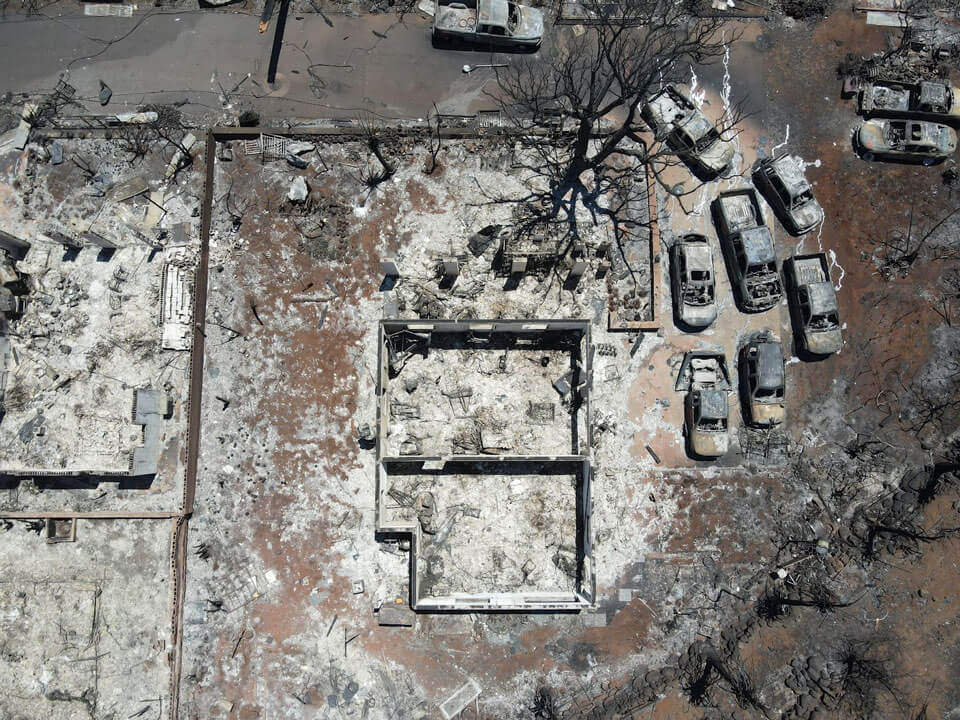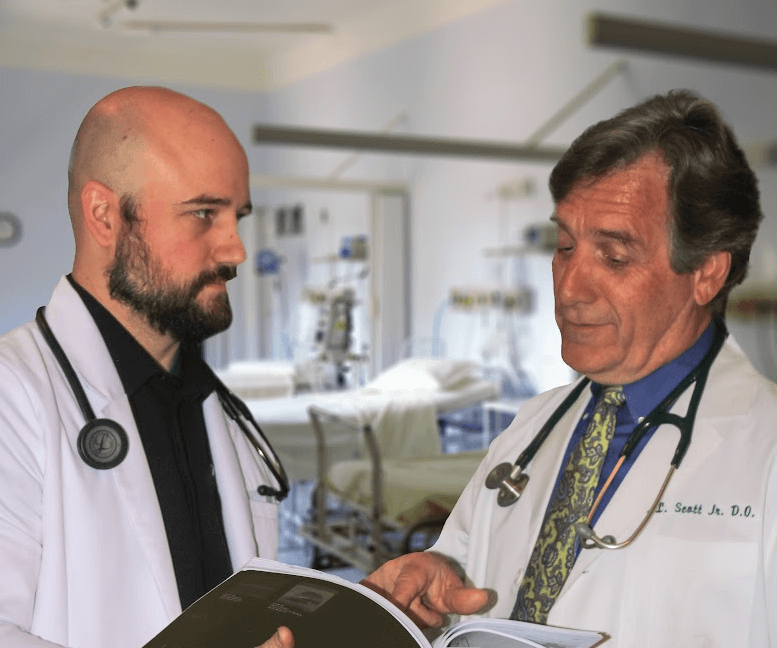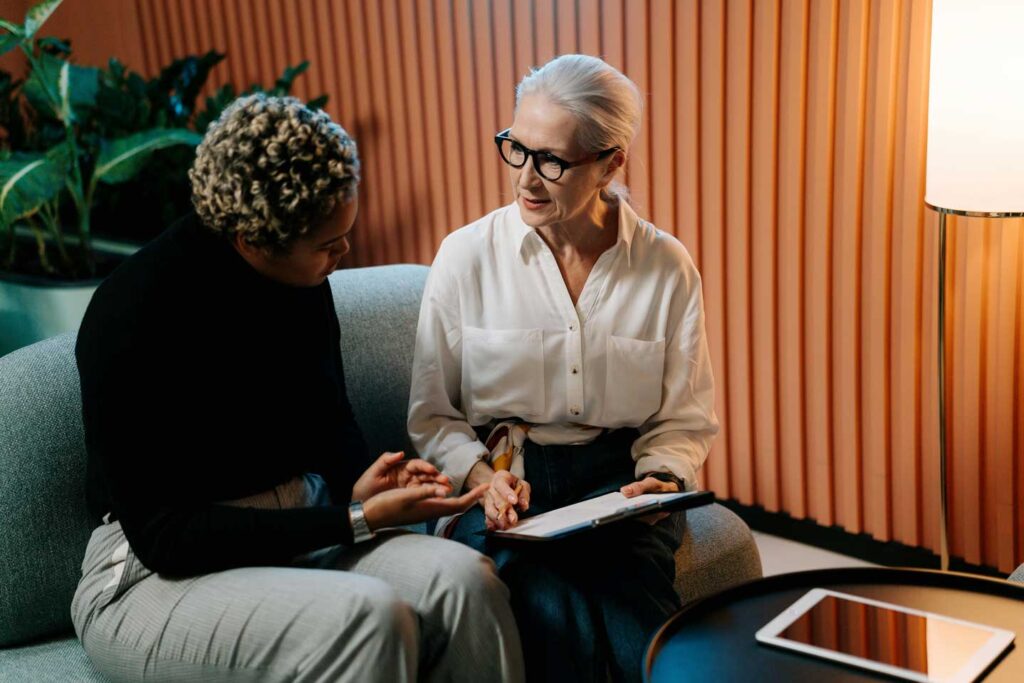Rubble from a home and vehicles in Lahaina, Maui, are pictured after the recent devastating wildfires.
By Dr. Kenneth Scott Jr., DO, CMD
The morning of August 8 began like any other day in Upcountry Maui as the sun rose over the top of Haleakala Mountain, shedding early morning warming rays on lush green foliage glistening with dew.
Birds were chirping off the back lanai, where I took a few moments to finish my coffee while enjoying the beautiful view looking out over the valley. From my vantage point, I could see boats, looking like small white blobs in the distance, moving slowly about the north and south shores—a clear indication that tourists were already enjoying the perfect weather and warm water that Maui is so famous for.
Staring out over the beauty that I am fortunate to wake up to every morning, I brushed off the urge to remain motionless, reminding myself that my patients needed me and I had work to do.
I didn’t realize the historical devastation that would soon be raging across Maui and how life on the island would be forever changed.
Keeping an Eye on the Storm
Arriving at the hospital that morning, I sat down at my desk to organize my day. It felt good to know that our island had avoided another hurricane. I thought back to when I first came to Kula Hospital to help out temporarily—I thought—with its doctor shortage. I had not planned on living here permanently, but six years later, my wife and I have settled in.
The weather and beauty have been easy to get used to. The isolation of living on the most remote Island chain on the planet—the furthest from any continent—carried both intrigue and hardship that made living here a challenge. Over the years, this island lifestyle produced a deep respect within me for the people who had lived here all their lives and had grown strong in spirit and resolve, facing challenges with a grit and determination that I imagined was similar to our early pioneers.
I thought back to my first hurricane drill at the hospital. The Hawaiians had learned to take these storms seriously and to be prepared for the worst. It had been many decades since a hurricane actually produced massive ruination on the island, but past destruction was not forgotten.
Kula Hospital is an old building with a rich history in Upcountry Maui. At 110 years old, it stood like a stone fortress at 3,500 feet above sea level. I felt comforted by the fact that the last time Mauna Loa, the main volcano on the Big Island, had erupted with the shock of an earthquake registering 7.4 on the Richter scale, not one stone broke loose in our old hospital. The building swayed, and we all paused, but in the end, we felt safe from the elements within those old walls.
My work progressed throughout the day as usual, even as I was trying to be extra efficient. As is often the case, we had a visitor from the mainland. This time, it was my wife’s sister, and the women had suggested that we go to supper that night in Kahului. Arriving home a little early, I suggested that we get an early start on supper. We had been warned that Hurricane Dora, although veering off to the south of the Big Island, would probably bring some strong gusts of wind across Maui from the outer tail of that large storm system.
In the early afternoon, there was already a fire burning in Kula on the side of Haleakala Mountain. It was far enough away not to concern me—however, with the direction of the winds, we were not necessarily out of danger. “Let’s go early,” I said, “so we can get back early. You never know how these fires will progress.”
The women agreed, and we headed down the mountain for a bite to eat.
Wildfires Engulf Maui
By 6 p.m., we were heading back home. As I drove out of town toward Haleakala Mountain, I could see the smoke rising from the original fire that had been reported earlier in the day. However, of concern were two other areas where smoke was rising on the side of the mountain. Pointing it out to the women, we determined we should go on the back roads up the mountain, which would take a little longer but would allow us to avoid the areas where fires were obviously burning.
The back roads took us across acres of scrub that used to grow sugar cane up until about five years ago. We made good time until we began the ascent up the mountain. The sun was setting, and several cars were stopped along the road with people stepping out to get a better look at the fires on the mountainside.
As dusk settled in, flames could be easily seen leaping into the sky near homes on Mount Haleakala. We rounded the next corner to find firetrucks blocking the road. Immediately past the trucks, a new fire had started, and the flames could be seen leaping across the road and 10 feet into the sky. This represented a new fire that threatened thousands of acres of scrub brush in the valley. I turned the car around to head for another road up the mountainside, beginning to feel a little anxious about being able to get back to Kula Hospital, where I was on call for the night.
As we wound our way up the mountain, my anxiety grew as gusts of wind picked up and smoke billowed across the road in front of us. There aren’t many roads leading up to Kula, and one by one, they seemed to be blocked off by stopped traffic, fire trucks, or ever-deepening black smoke. We found ourselves following other slow-moving vehicles until each one turned off or stopped on the side of the road. It was then that we began to see people standing in their front yards, with water hoses in their hands, looking up the mountain in the direction we were heading.
We rounded the next corner to realize we were on the very edge of one of the wildfires. Now, there were no longer gusts of wind but a steady, strong wind that felt more like a vortex blowing continually across the road. The black smoke became thicker, and at times, sparks were hitting our car. We managed to make some turns and eventually got through the black smoke and to clear skies on the other side of the fire. A sense of relief washed over me as I realized we had made it past the immediate danger and would arrive safely home.
Our home, further along the side of Haleakala Mountain, was about halfway between the wildfires and Kula Hospital. I spent most of the night sitting on the lanai, where I could see the flames and hear the roar of the fire, like a hot furnace in the distance. Based on the wind direction, I knew we were safe but also realized that a slight change in direction could put us directly in the path of the fires. By sitting up and watching, I felt we would have enough notice to vacate the house and head for Kula Hospital if needed.
The next morning, we learned that while we were struggling with our upcountry fires, the town of Lahaina had been completely ravaged by fire.
Coping with the Aftermath
The weeks since the fires have flashed by in a blur. Ambulances began to line up at the emergency entrance of Maui Memorial Medical Center, and soon, there were more patients on stretchers than hospital beds on the island. Long hours in the hospital transitioned to work at relief hubs after hours. The stories of those who lost everything, including family members, have been extremely hard to handle. Water in the upcountry region surrounding Kula became contaminated with toxins due to the fires and was unsafe for consumption for about a month. As people had to be sheltered together temporarily due to evacuations, the close living quarters resulted in a surge of COVID on the island, necessitating more hospitalizations and further congesting an overburdened system.
Despite all the tragedy, however, it was amazing to watch the community pull together. The resilience of the people shone through as supplies of goods—including food, clothing, and medical care—immediately began to be delivered directly to the beaches surrounding Lahaina by private boats. Disbursement hubs began to pop up, surrounding areas of devastation, bringing clean water, food, and first aid to citizens in need.
Upcountry Strong is a not-for-profit that we have volunteered with since its founding during the COVID pandemic. It was started to bring food to upcountry Maui during the darkest hours of the pandemic, when so many people had lost their jobs, were isolated at home, and no longer had the means to support their families. The generosity of friends from the mainland was felt with large donations of supplies, clothing, and food that were shipped in and delivered to our hub in Pukalani.
Between August 23 and September 30, over 4,000 people who have suffered loss from the wildfires have been served at the Pukalani Hub thanks to the generosity of people across the country who have given to those in need. That figure includes 1,097 unique households, 1,027 repeat visits and 128 operating hours. It has been exciting to be a part of the band of citizens who would hear of a need, receive fresh produce from the local farmers, and connect with businesses across the island to transport and deliver food to those who had lost everything.
The physicians of Maui Health continue to give countless hours at aid stations to those in need, supported by local pharmacies that have provided medications to people whose medications burned in their homes, helping to avert some hospitalizations. Bringing care to people who no longer have a means of transportation has been important to the health and welfare of an Island community under siege.
Kula Hospital has routinely practiced disaster drills in an effort to be ready should tragedy strike. The closeness of the fires to our hospital put new meaning into preparation. It is one thing to practice drills for a situation that has never arisen—it is another thing to practice those drills with the experience of realizing how close the danger truly was. Experiencing the surge of casualties that arrived at our door showed not only the need for coordinated efforts of care across the hospital and first-responder community but also the need for businesses and citizens to be prepared as well.
We recently had our first debriefing at Kula Hospital with members of FEMA, the Hawaii Emergency Management Agency (HiEMA), and Maui Health present to discuss what went right and what could have gone better at Kula Hospital. It was an open and candid conversation that was well worth the time spent. Officials from FEMA that were present had responded to other major disasters, including Hurricane Sandy and the 9/11 attacks on the Twin Towers in New York City. Their insight and experience was invaluable and will continue to help as we plan for the future.
What we learned is that a disaster can never be totally planned for. In part, that is the very definition of a disaster. However, we will be better prepared for the next one as we digest this experience.
As the attention of the rest of the world turns to other disasters, we understand that we will be left to continue to rebuild our communities and support those who have been so directly harmed by this tragedy. The sprint may be over, but the marathon has just begun. I am confident, however, in the resilience of these island people. On any given day, I can stand on my lanai and look out over paradise, but our people will not forget our island family. I am confident we will continue to support those in need as we rebuild our communities.
Dr. Kenneth L. Scott Jr., DO, CMD, is a proud father, husband, and experienced medical professional with over 30 years of experience. From serving in management as a certified medical director to belonging to numerous medical societies, he leads with a vision to change medicine for the better.





